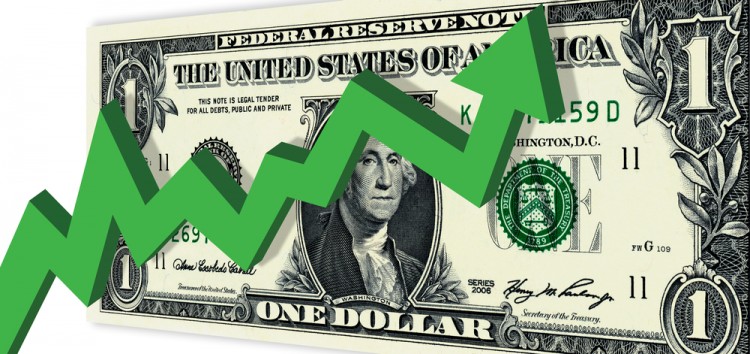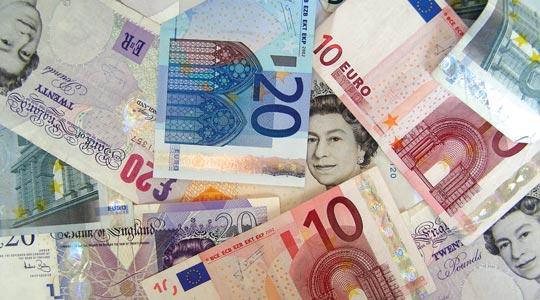Thursday 22nd of February saw the US Dollar hit a 10 day high in response to minutes from the US Federal Reserve January meeting. The result of the meeting saw policy makers showing confidence in the economic outlook for 2018.
The US Dollar which is measured against six other major currencies climbed to a 90.235 (DXY) high, the highest it has been since the 13th of February. The dollar index climbed up 2% after falling to its lowest point of 88.15 in three years, last week.
Wall Street began the day on a high note, but closed lower after the bond yields rose. Late Thursday’s trading saw the 10 year Treasury yields reach 2.957 percent, an all time high since January 2014. The last high stopped at 2.95 percent.
The optimistic tones of the minutes from the meeting held between January 30 and 31 bolstered expectations that Jerome Powell, new chief of the federal reserve will increase rates next month, and that there is the possibility that rates can be increased two more times before the end of the year.
The minutes also revealed that policymakers have upgraded their economic outlook projections since December of 2017. This made the US dollar to rise more than 2% after the first all time low in three years experienced on Friday. This put the US dollar on a sure footing for its first weekly gain of 2018.
Chris Turner, INC currency strategy head in London is of the opinion that the release of the Federal Open Market Committee (FOMC) minutes has given the US dollar a small boost, with policymakers showing confidence that the current inflation is moving in the right part and would guarantee gradual rate increase in future.
What influenced the market?
Initially, the US dollar had an uncertain reaction to the Federal Reserve January meeting when it canceled out its earlier gains, but it quickly rebounded and reclaimed lost grounds as the US Treasury inched higher.
The US dollar, before today has been troubled by concerns that Washington may decide in favor of a strategy that supports a weak dollar system. It has also been plagued by mounting concerns over the US budget deficit. But the dollar made an about turn Thursday, gaining from the increasing US bond yields, especially in light of the Treasury Department’s plan to issue more debt in preparation for bigger federal spending and the likelihood of an increase in interest rate.
In the minutes, policymakers agree that the encouraging short term economic outlook increases the possibility that an upward review of federal funds will be appropriate.
However, the Fed minutes had little or no effect on the dollar in other areas, especially as regards recovery in investment potentials abroad. There is also concern in certain circles that Washington’s twin deficit and dollar policy may drive the dollar further. Analysts say they expect to see more dollar weakness in the weeks to come.
What to expect
As earlier pointed out, market analysts see the possibility of the Feds increasing interest rates multiple times this year; some expect rate hikes to happen at least four times before the end of2018. Hirofumi Suzuki, an SMBC economist in Singapore suggests that the first rate hike may happen as early as March 2018, although he expresses doubts that multiple rate hikes is the Feds true intention.
Despite the rebound of the US dollar, analysts are sounding a note of caution, reiterating the possibility of further dollar weakness due to an ever increasing deficits and long term debt stability. For this to change and the dollar’s upward trend to continue and remain constant, it will take a lot more than an upbeat Fed report. To this end, market watchers need to keep their ears peeled for Jerome Powell’s testimony before congress in the coming week. Whatever the new chief of the Federal Reserve has to say will to a large extent determine what should be expected from the Feds this year, and this will in turn determine the dollars overall course.
What happened elsewhere?
In Britain, an unexpected increase in unemployment rate saw the Pound Sterling drop against the dollar though it picked back up a bit after wages picked up speed. Even at that, GBP dropped 0.24% to a one week all time low to $1.3884. The Euro also placed at its lowest point against the US dollar since February 12, dropping 0.46% to at $1.2276 in early Thursday trading, but was last seen to place steady at $1.2283. However, the dollar dropped 0.29% against the Japanese Yen to stop at 107.45.



